Site of The New England Kitchen - A Scientific Approach to Cooking & the Launch of Boston's Public School Lunch Program
Introduction
Text-to-speech Audio
Ellen Swallow Richards (1873, S.B. Chemistry) and Mary Hinman Abel opened the doors of the New England Kitchen on January 24, 1890, as "an experiment to determine the successful conditions of preparing, by scientific methods, from the cheaper food materials, nutritious and palatable dishes, which should find a ready demand at paying prices.”1 Originally located at 142 Pleasant Street, the Kitchen soon expanded to other neighborhoods. After securing a contract to prepare lunches for Boston's public high schools in 1894, the Kitchen consolidated operations at this 485 Tremont Street location. During this time, Ellen also worked as a full-time MIT instructor teaching Sanitary Chemistry classes at MIT and, with Professor Thomas M. Drown, conducted a landmark survey of Massachusetts waterways. To accomplish her goals, Ellen recruited an army of intelligent women to fund, promote and manage the work of the New England Kitchen, demonstrating the collective power of women committed to social reform.
The original New England Kitchen site at 485 Tremont Street was demolished and now is the "backyard" of the Berkley Street Benjamin Franklin Cummings Institute of Technology established in 1908. The School has plans to move to Roxbury in 2024.
Images
New England Kitchen at Tremont Street in Boston. Circa 1894-1907
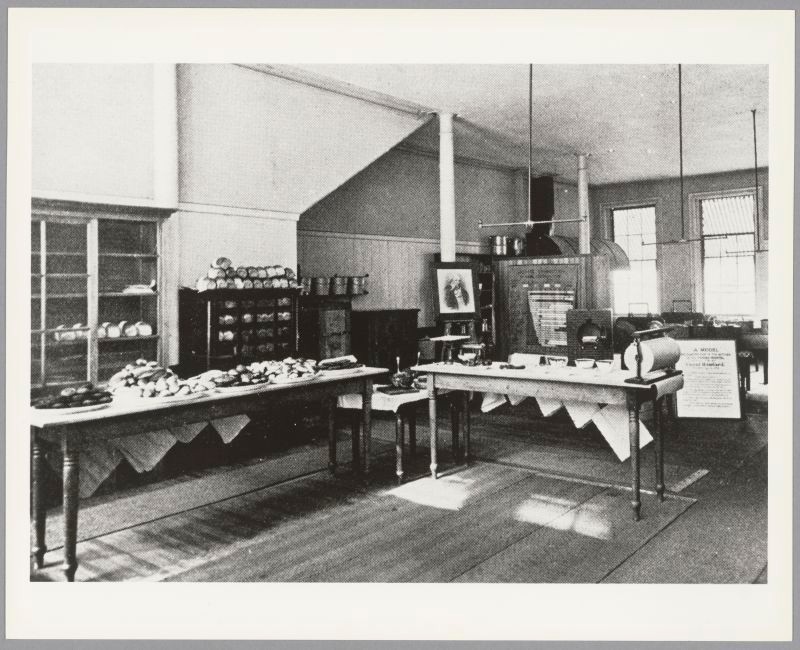
Interior of the New England Kitchen of Boston, established by Ellen Swallow Richards in 1890. at 142 Pleasant Street in Boston
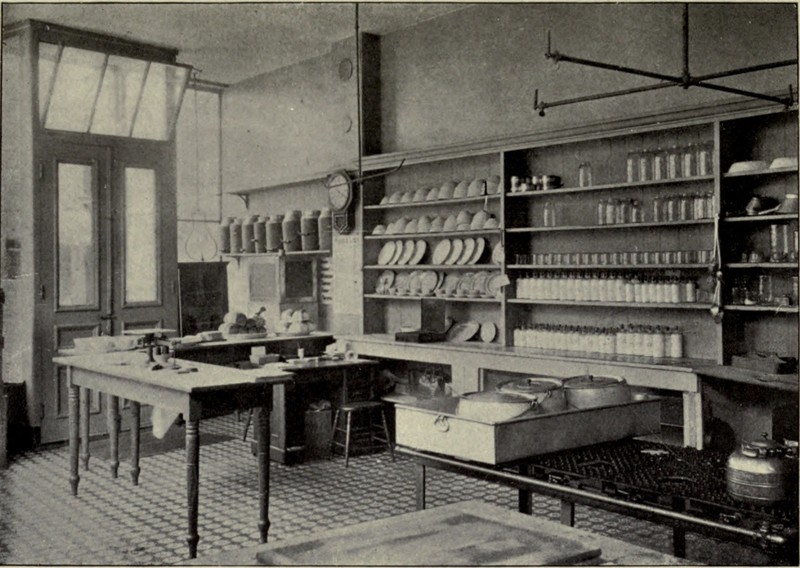
Lunch counter at Boston Latin School.
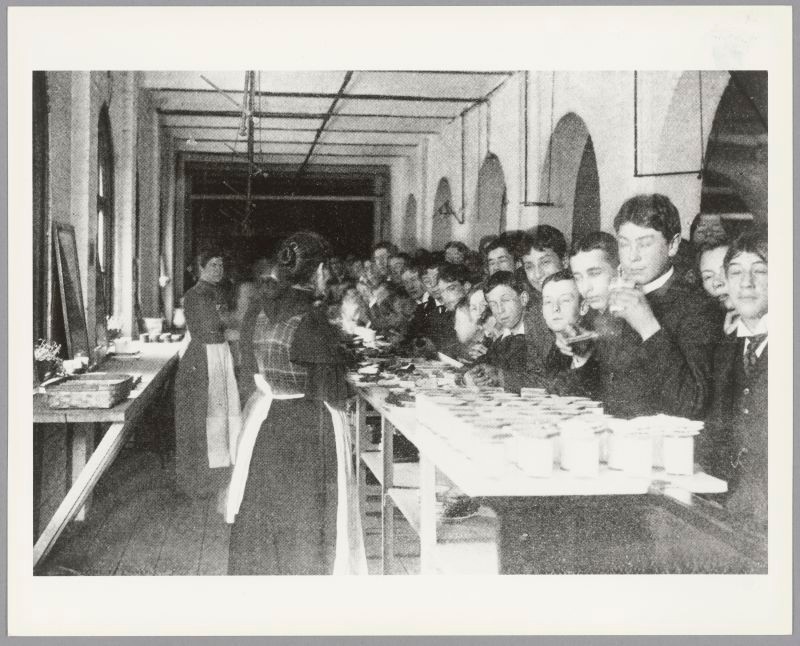
Lunch Menus: “Jelly” first appeared as part of the 1892-93 test menus and has been part of institutional lunches ever since: “Gelatine desserts are popular when served with a garnish of whipped cream.”
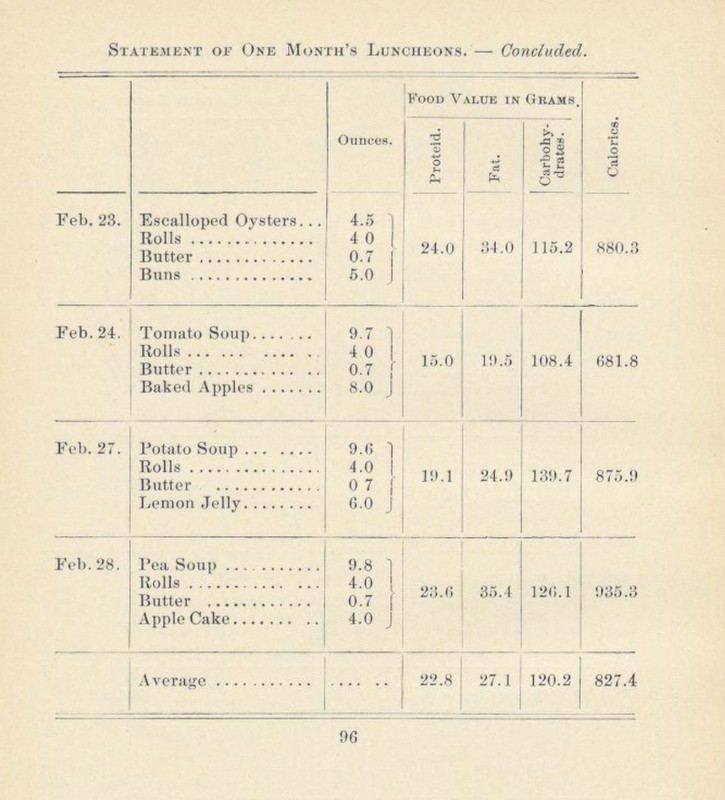
Ellen A. King. Manager of the Lunch Room in Rogers Bldg. (Boston) from 1890 to 1908; during WWI managed the Naval Recreational Bldg. and after that the reading rooms at Walker Memorial Library until 1933.
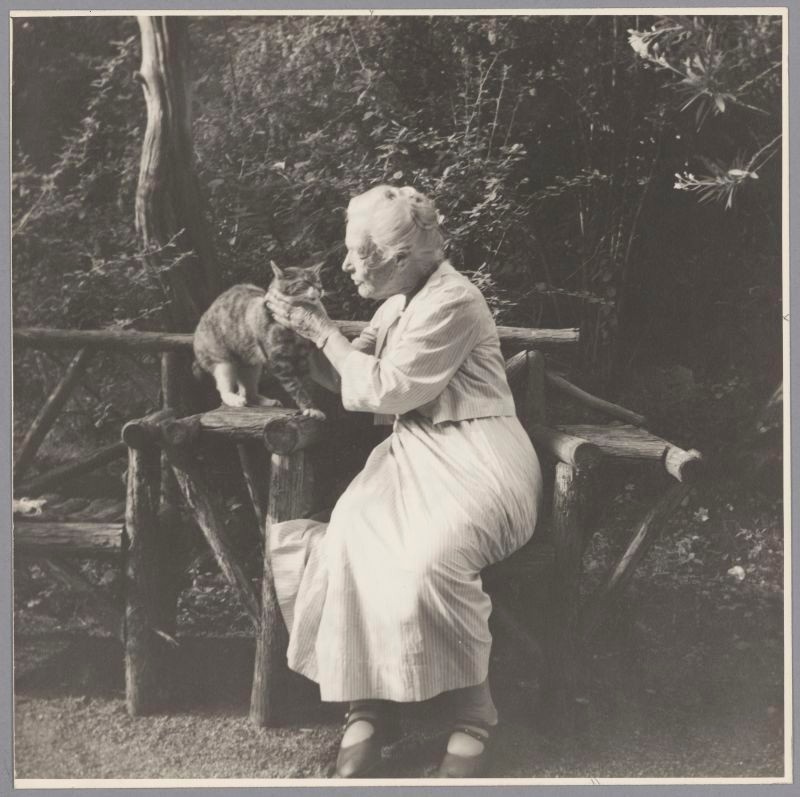
Mrs. King's Lunch room in the Pierce building with
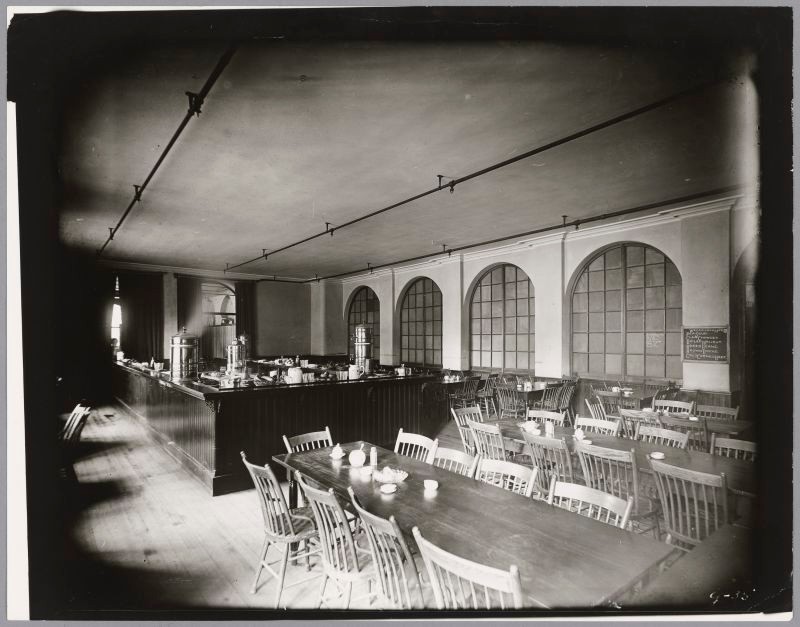
Interior of the Rumford Kitchen at the Chicago World's Fair.
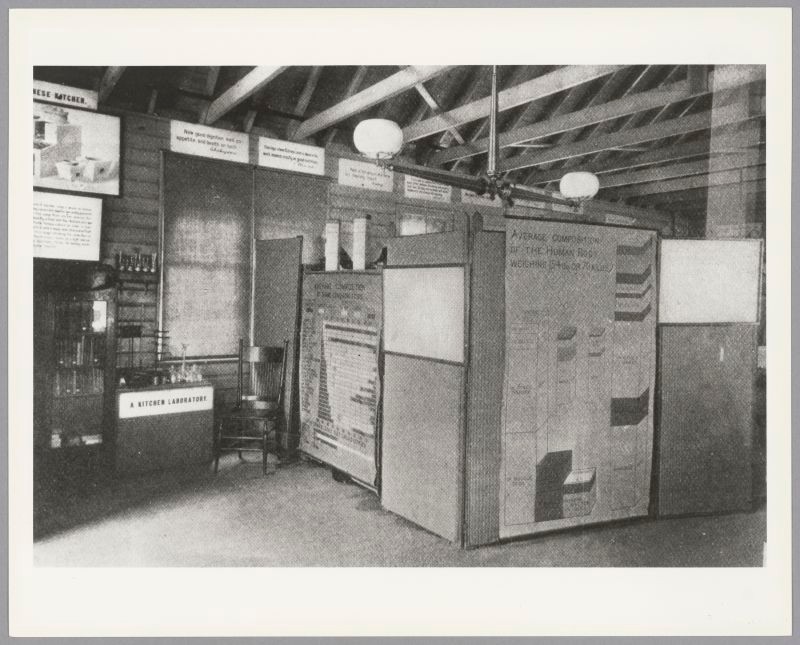
Rumford Kitchen interior at the Columbia Exposition, 1893
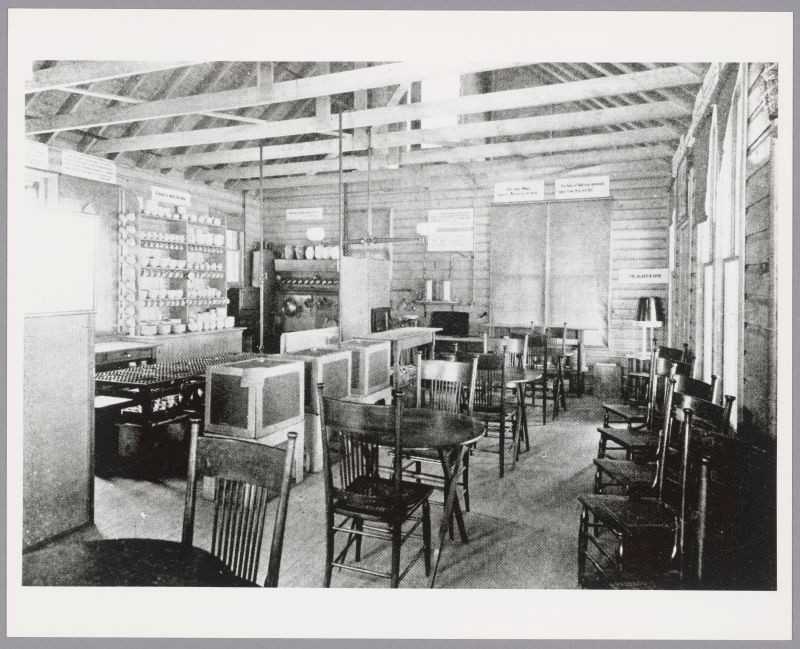
Backstory and Context
Text-to-speech Audio
19th-century working-class and immigrant families lived in boarding houses and tenements with limited access to kitchen facilities. Food represented 50% of their income. Social reformers believed if families could minimize food costs, they would have more income for other needs. Ellen and Mary designed the New England Kitchen as a takeout restaurant offering the highest nutritional value for the lowest cost. Menu items met strict requirements: “First, the cost of the materials must not go beyond a certain limit. Second, the labor of making it must not be too great. Third, it must be really nutritious and healthful. Fourth, it must be in a form that it could be easily served, and kept hot without loss of flavor. Fifth, it must suit the popular taste enough to be salable.”1 After many experiments, subsidized by Pauline Agassiz Shaw, to ensure economy and nutrition, beef broth, soups, stews, chowder, and puddings were placed on sale by weight or measure.
Ellen and Mary had considered naming their enterprise the “Rumford Food Laboratory” to honor one of the first Food Science pioneers, Count Rumford. However, they feared customers would not want to eat laboratory food, so they chose a more “homely and attractive” name. Beef broth formed the base for most of their recipes. After twenty experiments, they concluded that the Aladdin Oven, a prototype for today’s slow cooker, maximized quality and volume and minimized labor and fuel. As planned, Mary stepped away from an active role in the New England Kitchen in mid-1890. Ellen hired Sarah E. Wentworth (Class of 1882), one of her former students, to replace Mary as manager and oversee the day-to-day management.
Child nutrition also concerned Ellen: “One of the natural outcomes of the work of the New England Kitchen was an endeavor to furnish the one-session schools of Boston, namely, the nine high schools, with a luncheon which should be wholesome, inexpensive, and sufficiently attractive.” 10 In 1892 Amy M. Homans, director of the Boston Normal School for Gymnastics, commissioned, and Ella Sturtevant Kellen funded Ellen’s School Lunch Study. Based on the results, two years later, with the support of Dr. Caroline Hastings (Chair of the Committee on Hygiene and Physical Training), Emily Porter Fifield, and Laliah B. Pingree, the Boston School Board awarded the New England Kitchen a contract to provide school lunches for 5 cents each. By December 1894, Girls’ High School, the Boys' Latin and English Schools, and the School of Mechanic Arts became the first public schools in the US to participate in a School Lunch program. Like cafeterias today, students could buy a complete lunch or individual items such as milk, soup, sandwiches, rolls, ice cream, and cakes.
Ellen wrote, “In the twentieth century it will be held a criminal offense for a college to lure students to its halls under the pretense of education, and then slowly poison them by bad air and poor food.”4 Under discussion for years, in September 1889, MIT opened a lunchroom for students in the basement of the Rogers Building, supervised by the Women’s Educational & Industrial Union (WEIA). By the following year, Ellen Richards had assumed “the scientific direction” of the lunch room. Lunchroom manager Ellen A. King would oversee “the practical direction and business management” until 1908. The New England Kitchen provided MIT with 300-400 meals per day with an average cost of twenty cents.7
With increasing recognition for the New England Kitchen’s work, the Massachusetts Board of World’s Fair Managers invited Ellen to showcase her research at the 1893 Chicago World’s Fair. Designed to educate the public on healthy and economical eating, Ellen’s Rumford Kitchen Exhibit featured the latest technology and included a restaurant modeled after the New England Kitchen. Opened from 12-2 P.M. and seating 30 people, the Rumford Kitchen sold 10,000 meals during the two-month exhibit. The Rumford Kitchen Leaflets, edited by Ellen and published in 1899, which describe the history of the New England Kitchen and current research, are considered the 19th Century’s most influential works on Food and Nutrition Science. By 1908, when the New England Kitchen became more enterprise than experimental, Ellen transferred ownership and management to the WEIA. 6,8
In 2021, US households in the lowest income bracket spent an average of 30.6% of their income on food. Providing the best nutritional value per dollar is still relevant. Because the New England Kitchen work predates the 1919 discovery of vitamins, the recipes include few fruits and vegetables. Although by modern standards, Ellen’s recipes would be economical but not healthy, knowledge gained from the New England Kitchen would lay the foundation for the field of Home Economics and the USDA’s National School Lunch Program.
Cite This Entry
Smith, Coleen. "Site of The New England Kitchen - A Scientific Approach to Cooking & the Launch of Boston's Public School Lunch Program." Clio: Your Guide to History. May 23, 2023. Accessed March 29, 2025. https://theclio.com/entry/162977
Sources
- Abel, Mary Hinman. The Story of the New England Kitchen. 1890. MIT: Ellen Swallow Richards Digital Library. http://web.mit.edu/hartman/public/digital/kitchen/index.htm. Accessed 2 Oct. 2022.
- Barrows, Anna. “The Lunch-Room in the High School.” The School Review, vol. 13, no. 3, 1905, pp. 213–20. http://www.jstor.org/stable/1075975. Accessed 24 Jan. 2023.
- Gunderson, Gordon W. “History of the National School Lunch Program | Food and Nutrition Service.” USDA Food and Nutrition Service | Food and Nutrition Service, 17 Jan. 2008. https://www.fns.usda.gov/nslp/program-history. Accessed 24 Jan. 2023. [Note: This article Incorrectly credits WEIA with the launch of the Boston School Lunch Program.]
- Hunt, Caroline L 1865-1927. The Life of Ellen H. Richards. Anniversary Edition, American Home Economics Association, 1958, https://hdl.handle.net/2027/uc1.b3888672. Accessed 11 Mar. 2022.
- Levenstein, Harvey. “The New England Kitchen and the Origins of Modern American Eating Habits.” American Quarterly, vol. 32, no. 4, 1980, pp. 369–86. https://doi.org/10.2307/2712458. Accessed 27 Jan. 2023.
- “Lunches for School Children.” Boston Evening Transcript, 14 Nov. 1894.
- President’s Report 1893, “The Lunchroom.” https://libraries.mit.edu/archives/mithistory/presidents-reports/1893.pdf#page=56. Accessed 20 Dec. 2022.
- “Public School Luncheons.” Boston Evening Transcript, 26 Nov. 1894.
- Richards, Ellen H., “Scientific Cooking-Studies in the New England Kitchen.” The Forum, vol. 15, May 1893, pp. 355-61. https://books.google.com/books?id=ZKHUzNaLXIIC&pg=PA780#v=onepage&q&f=false. Accessed 27 Jan. 2023.
- The Rumford kitchen leaflets. Boston: Rockwell and Churchill Press, 1899. https://iiif.lib.harvard.edu/manifests/view/drs:2936825$1b. Accessed 23 Jan. 2023.
- Spencer-Wood, Suzanne M., “A Survey of Domestic Reform Movement Sites in Boston and Cambridge, Ca. 1865-1905.” Historical Archaeology, vol. 21, no. 2, 1987, pp. 7–36. http://www.jstor.org/stable/25615631. Accessed 23 Jan. 2023.
- “The Boston Directory. [1892].” Internet Archive, Published by George Adams, 1892. https://archive.org/details/bd-1892/page/162/mode/2up. Accessed 26 Jan. 2023.
- “The Boston Directory. [1894].” Internet Archive, Published by George Adams, 1894. https://archive.org/details/bd-1894/page/1041/mode/1up. Accessed 25 Jan. 2023.
- “The Boston Directory. [1895].” Internet Archive, Published by George Adams, 1895. https://archive.org/details/bd-1895/page/1721/mode/1up. Accessed 25 Jan. 2023.
- The Tech, vol. 9, no. 10, 20 Feb. 1890, p. 1. https://thetech.com/issues/9/10/pdf. Accessed 20 Apr. 2023.
1. Tremont St. Courtesy of the MIT Museum, from the Rumford Kitchen Leaflets, p. 161. https://mitmuseum.mit.edu/collections/object/GCP-00024256. Accessed 2 Oct 2022.
2. Pleasant St. Courtesy of the MIT Museum. https://mitmuseum.mit.edu/collections/object/GCP-00024254. Accessed 2 Oct 2022.
3. Lunch Counter. Courtesy of the MIT Museum, from the Rumford Kitchen Leaflets, p. 89. https://mitmuseum.mit.edu/collections/object/GCP-00024249. Accessed 23 Dec. 2022.
4. Lunch Menu. From the Rumford Kitchen Leaflets , p. 96. See Above.
5. Ellen A. King. Courtesy of the MIT Museum. https://mitmuseum.mit.edu/collections/person/king-ellen-a.-13508. Accessed 23 Dec. 2022.
6. Pierce Lunchroom. Courtesy of the MIT Museum. https://mitmuseum.mit.edu/collections/object/GCP-00012835. Accessed 23 Dec. 2022.
7. Rumford Posters. Courtesy of the MIT Museum, from the Rumford Kitchen Leaflets, p. 16. https://mitmuseum.mit.edu/collections/object/GCP-00024251. Accessed 23 Dec. 2022.
8. Rumford eating area. Courtesy of the MIT Museum. https://mitmuseum.mit.edu/collections/object/GCP-00024231. Accessed 23 Dec 2022.

